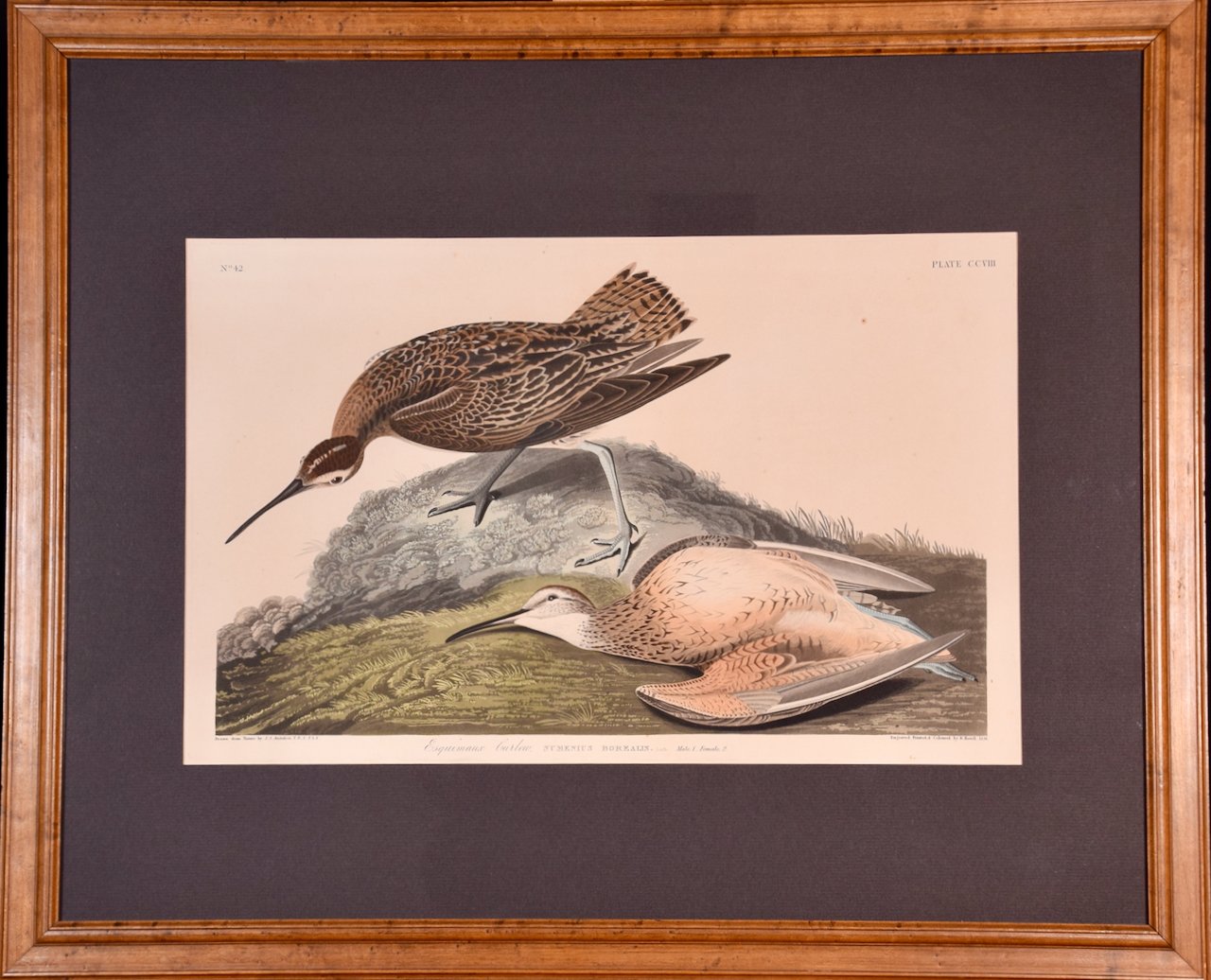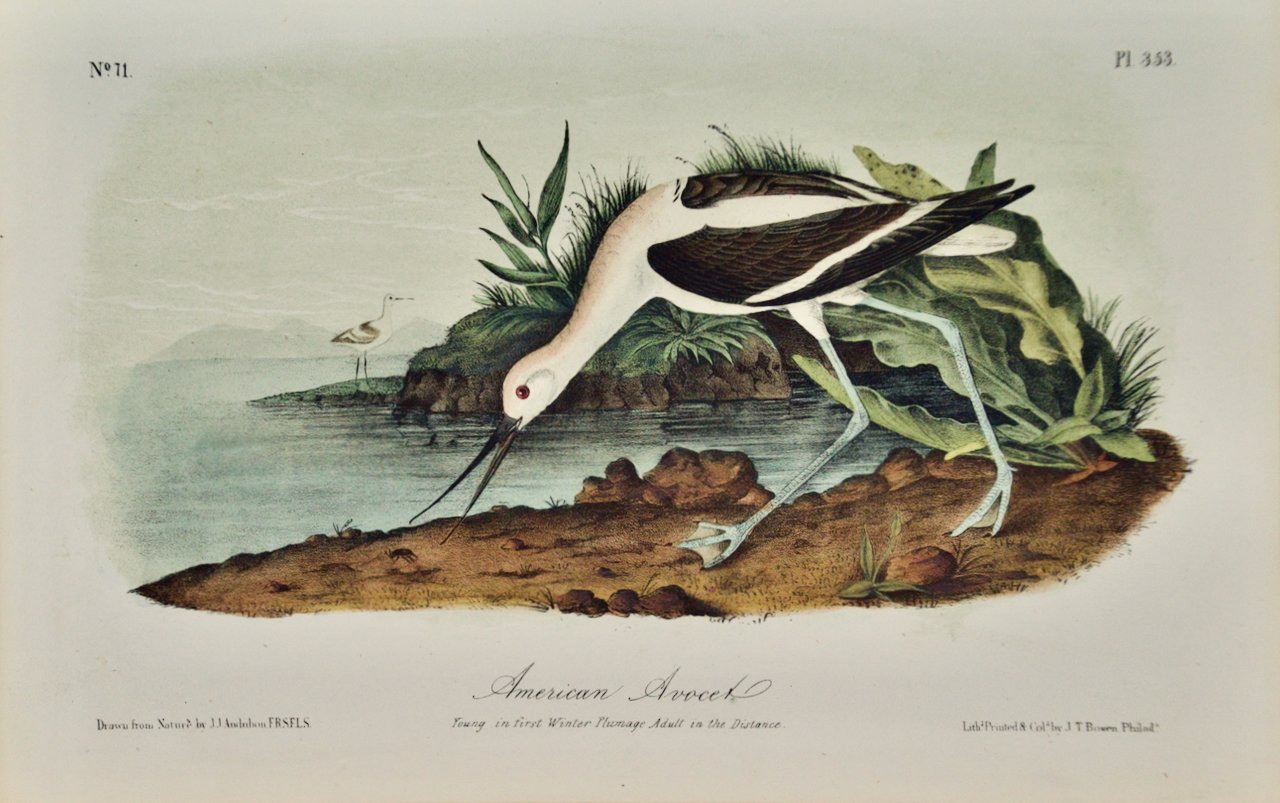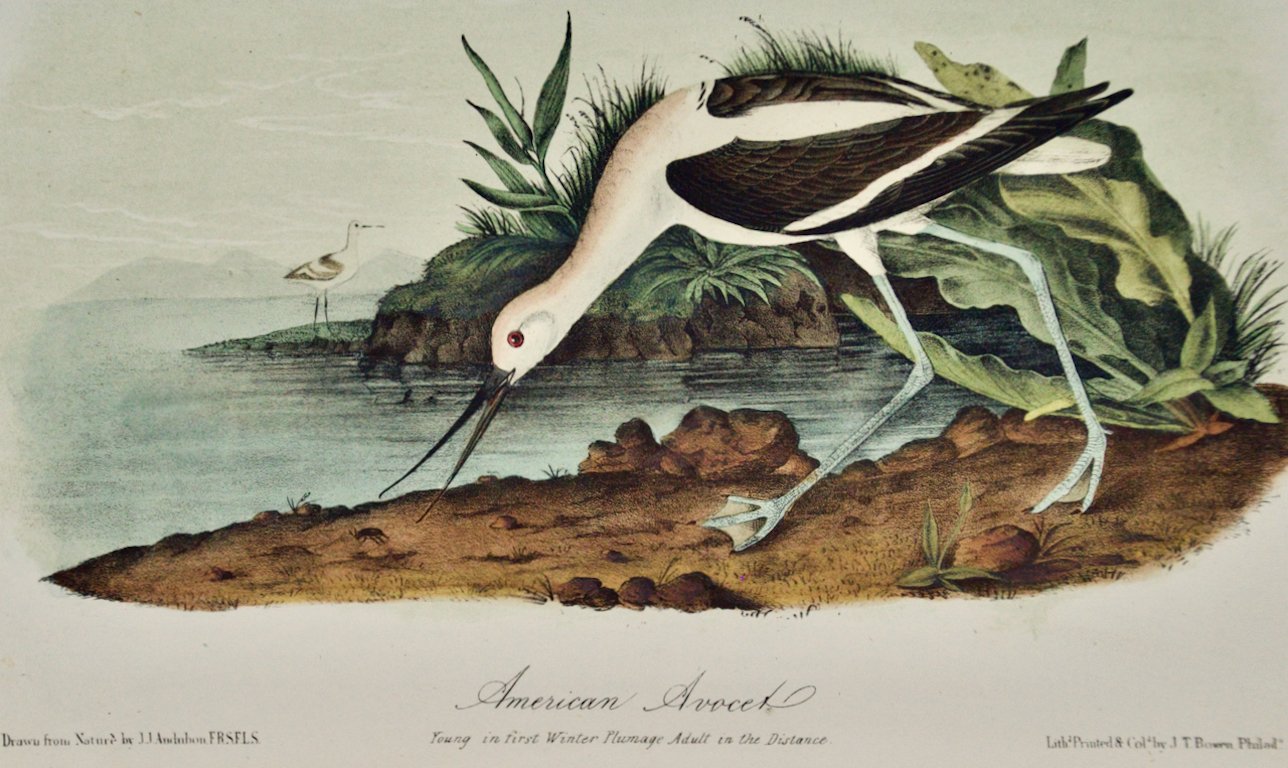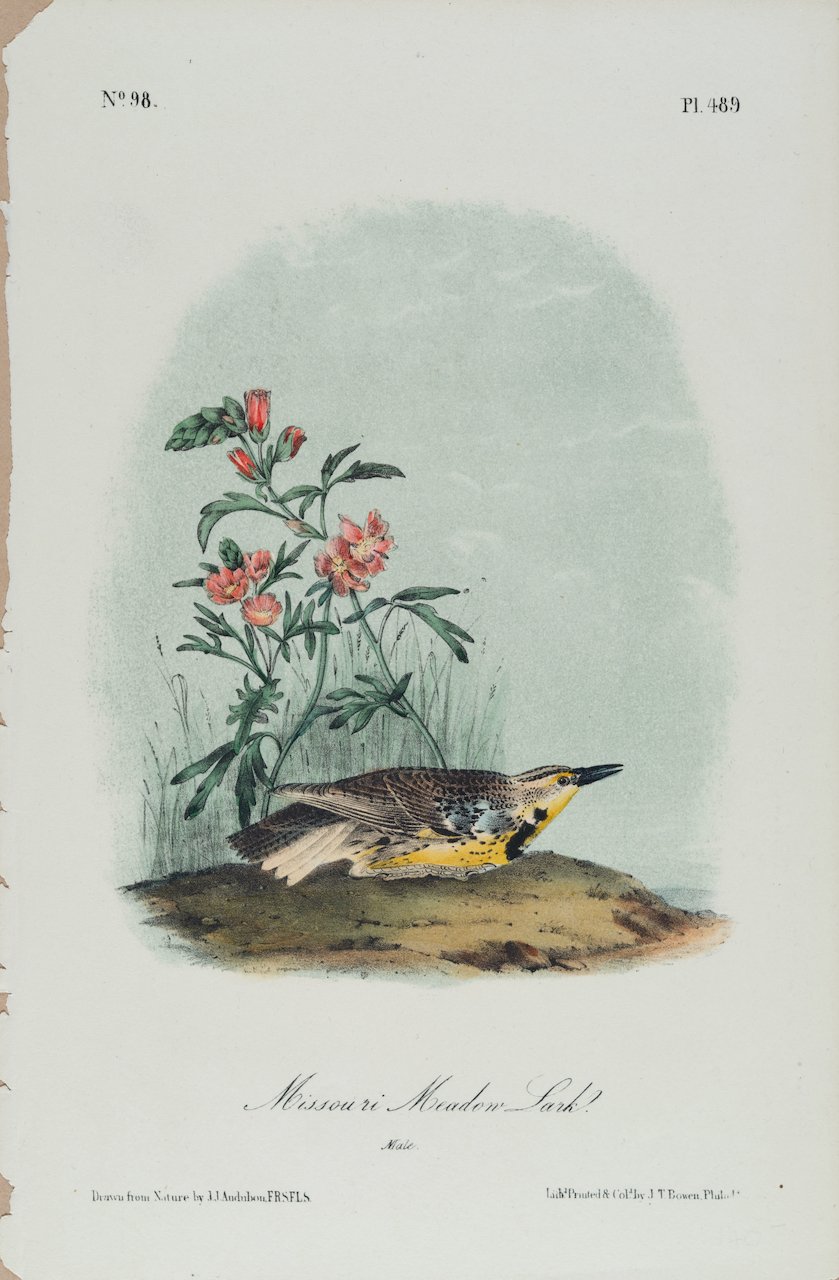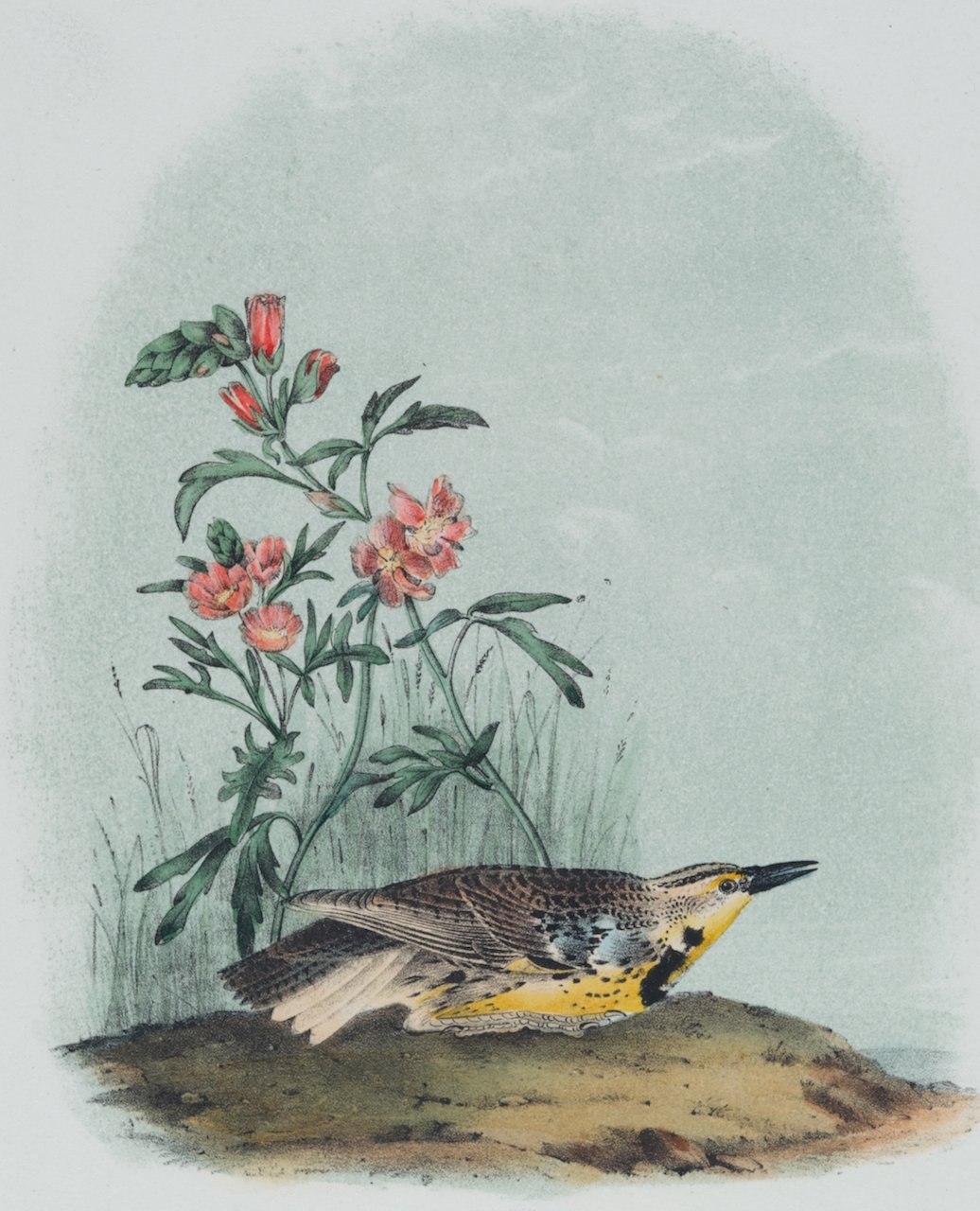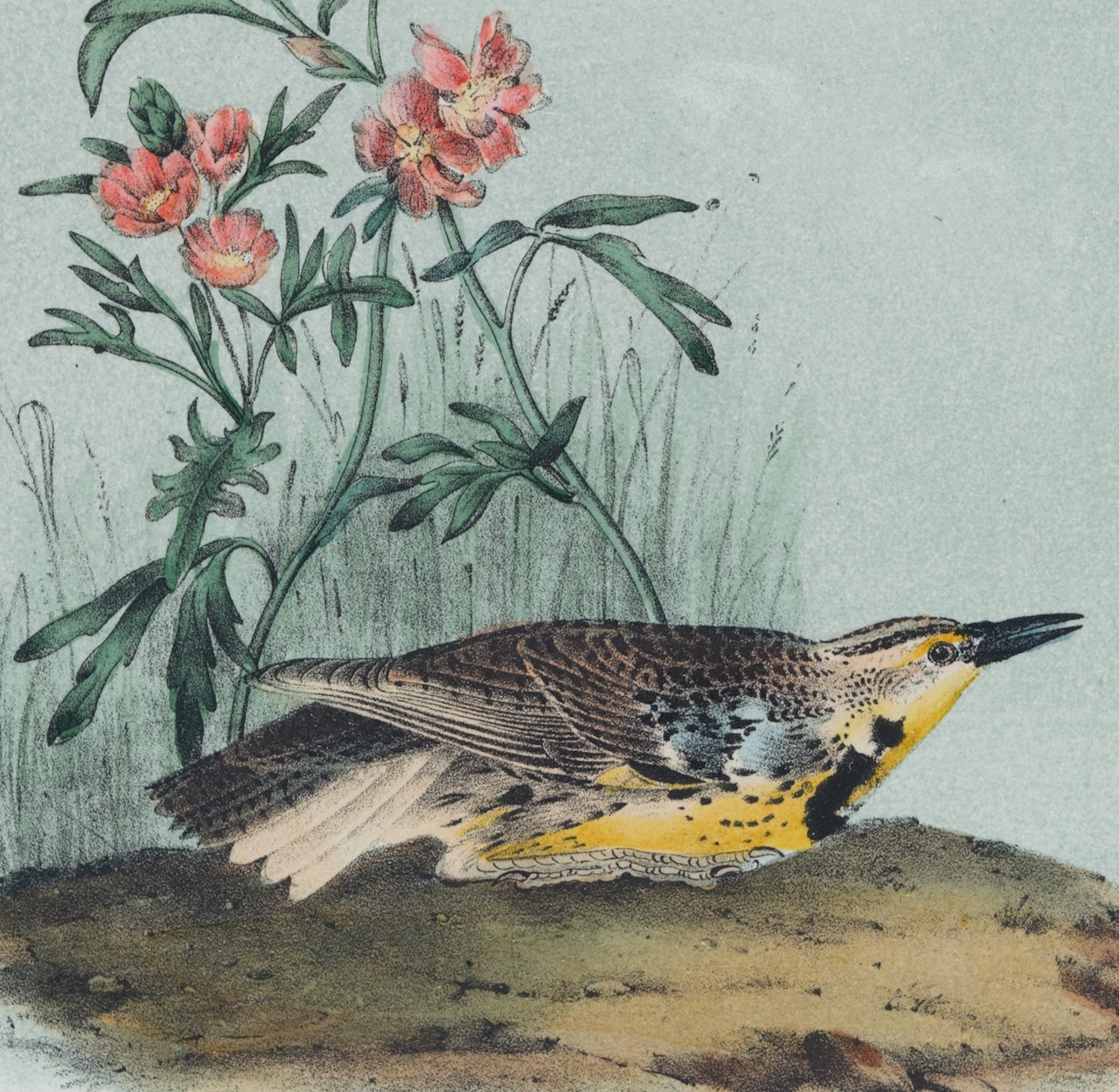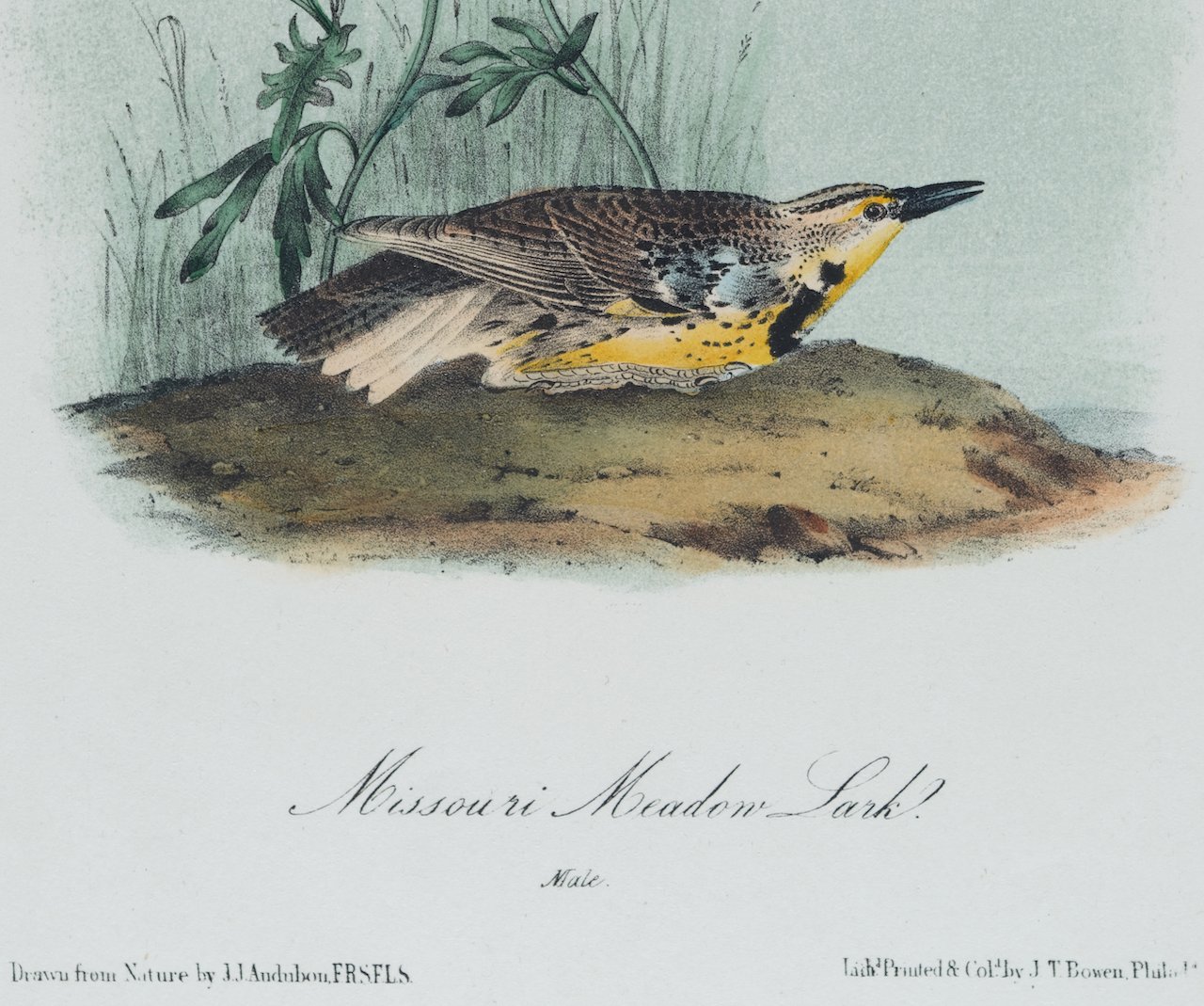This original folio edition hand-colored Audubon bird engraving is presented in a medium brown-colored wood frame with a charcoal gray-colored mat. It is glazed with UV conservation glass. All of the framing and mounting materials are archival. The frame measures 23.25" high by 28.38 wide by 0.75" deep". The sheet appears to have been trimmed. There is a small spot in the upper right and a few tiny barely perceptible spots elsewhere. The print is otherwise in very good condition.
Audubon had rarely seen an Esquimaux Curlew in the wild. Here is an excerpt from his book in his own words: "How this species manages to cross the whole extent of the United States without being seen after leaving Massachusetts, is to me very wonderful. On one occasion only have I ever had a glimpse of it. I was in company with my learned and generous friend John Bachman of Charleston, on one of the islands on the coast of South Carolina, whither we had gone with the view of watching the Long-billed Curlews (Numenius longirostris). It was at the dawn of a fine day, when a dense flock of the northern Curlews passed to the southward, near enough to enable us to ascertain the species, but so swiftly, that in a few minutes they were quite out of sight.
On the 29th of July, 1833, during a thick fog, the Esquimaux Curlews made their first appearance in Labrador, near the harbour of Brag d'Or. They evidently came from the north, and arrived in such dense flocks as to remind me of the Passenger Pigeons. The birds at length came, flock after flock, passed close round our vessel, and directed their course toward the sterile mountainous tracts in the neighbourhood."
John James Audubon (1785-1851) was a naturalist and artist. He was initially unsuccessful financially prior to the publication of his famous work “The Birds of America”, spending time in debtor’s prison, once stabbing a disgruntled investor in self-defense. However, his obsession with birds and art motivated him to persist in his goal of documenting every bird in America via his watercolor paintings and publishing his works for all to enjoy. Audubon's first illustrations were published in a large elephant folio size. Due to their expense they were purchased in rather small numbers by the wealthy. To reach a larger audience, Audubon, with the help of his sons and J. T. Bowen, published a smaller octavo sized lithograph version, which were much more affordable.
With the success of his bird projects, Audubon then turned his attention to four-legged animals. He explored the Missouri River in 1843 sketching the four-legged animals he encountered in their natural setting. His expedition covered some of the same regions recently explored by Lewis and Clark, traveling from present day Alaska to Mexico. Audubon realized that this was an opportunity to document these animals in the still relatively pristine American wilderness, before man encroached on their environment.
Between 1845 and 1848, Audubon and his sons John Woodhouse Audubon and Victor Gifford Audubon produced a set of elephant folio sized lithographs that were primarily engraved and hand colored by J. T. Bowen in Philadelphia. The publication, which included text descriptions of the animals was published 3 years before Audubon died. As with the birds, this was followed by a three-volume set of 155 octavo-sized plates entitled “The Quadrupeds of North America” completed and published by Audubon’s sons, John, Jr. and Victor.
Audubon prints continue to be popular and a wise investment. The double elephant folio set “The Birds of America” have sold at auction for as much as $8.8 million, and individual plates may sell for six figures. The beautiful octavo sized plates are not as expensive, but becoming more sought after, as the folio bird plates become unattainable to all but the very wealthy.

